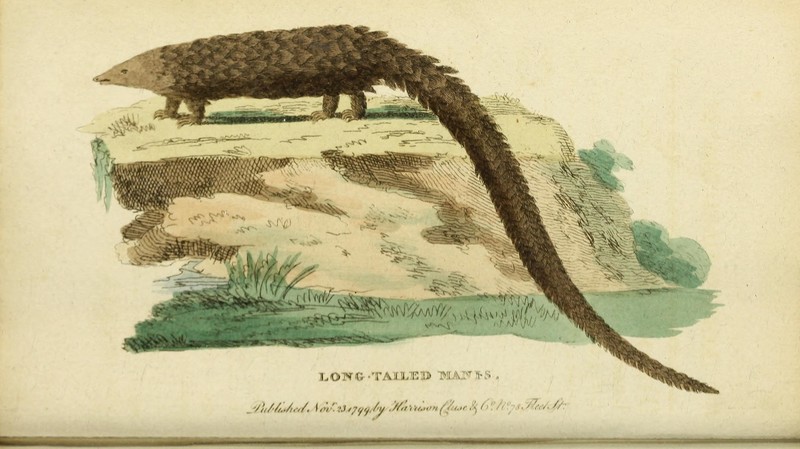Long-tailed Manis = long-tailed pangolin (Phataginus tetradactyla) LONG-TAILED MANIS.
Published Nov 23 1799 by Harrison Gluse & 610.js leeschte
The Naturalist's Pocket Magazine or compleat cabinet of the curiosities and beauties of nature.
Date 1800
Source https://www.biodiversitylibrary.org/page/47300803
Page numbers Page 88
Source: https://commons.wikimedia.org/wiki/File%3AThe_Naturalist%27s_Pocket_Magazine_or_compleat_cabinet_of_the_curiosities_and_beauties_of_nature_%2819963168228%29.jpg
The long-tailed pangolin, African black-bellied pangolin, or ipi (Phataginus tetradactyla) is a diurnal, arboreal pangolin species that belongs to the family Manidae. They are native to parts of western and central Africa, including the Congo Basin and Guinean forests. Long-tailed pangolins feed on ants rather than termites. They have a characteristic very long tail, reaching a length around 60–70 cm. The body can reach a length of 30–40 cm and weigh 2.0–2.5 kg. The long-tailed pangolin is covered with 9 to 13 rows of overlapping, artichoke leaf-shaped keratinous scales. The scales are dark brown color with a brighter rim, which serves as camouflage.
Order: Pholidota
Family: Manidae
Genus: Phataginus
Species: Phataginus tetradactyla Linnaeus, 1766
Synonyms
- Manis tetradactyla Linnaeus, 1766
- Uromanis tetradactyla (Linnaeus, 1766)
- Manis africana Desmarest, 1822
- Manis ceonyx Rafinesque, 1820
- Manis hessi Noack, 1889
